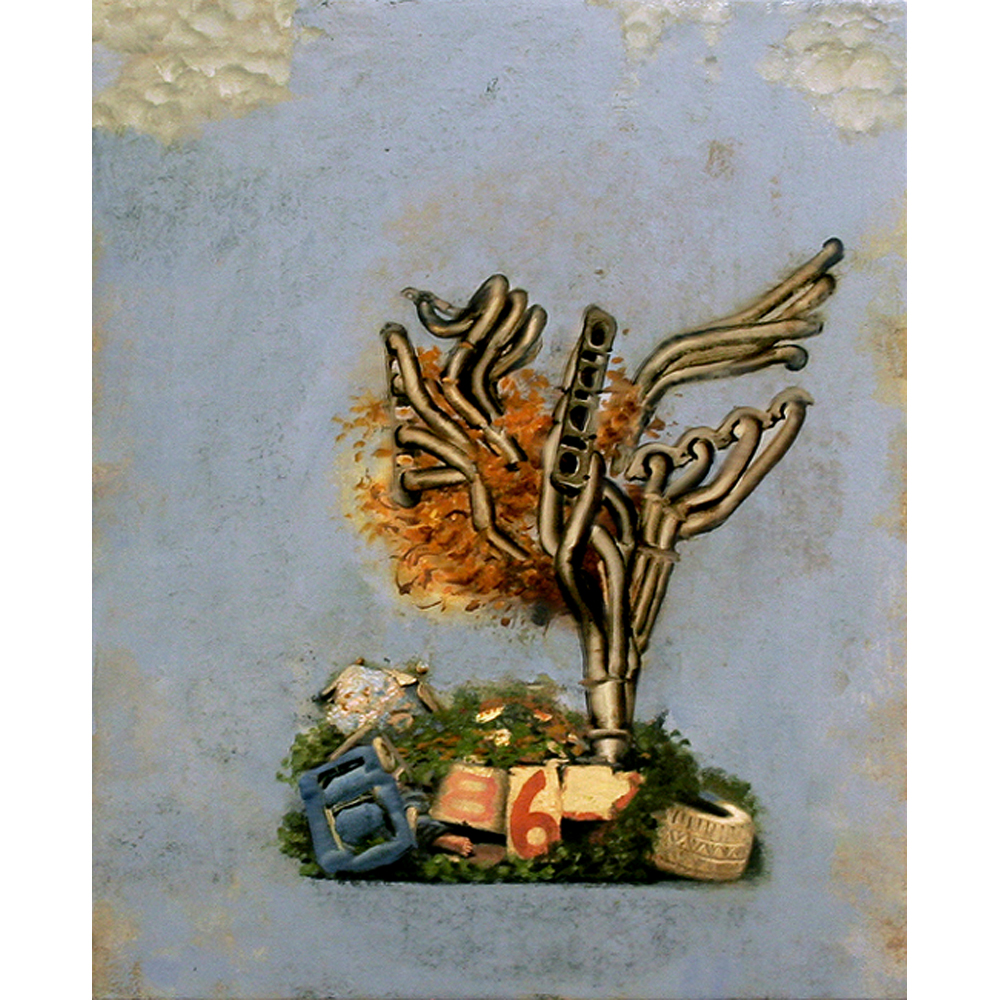Artwork Description
Scott Greene – Garden Snag
Dimensions: 22 x 18″ finished size / 22 x 18″ unframed
Year: 2010
Medium: oil on canvas on panel
Scott Greene’s oil on canvas on panel work, Garden Snag, shows an unconventional garden scene, where a metal tree—reminiscent of a deconstructed instrument—grows from a patch of grass interspersed by forgotten items and children’s blocks. Greene plays with the idea of childhood and temporal development within the work, where the presence of live material indicates a sense of growth and a movement away from the budding stages of early life. This growth is interrupted, however, by the plant’s man made qualities; the silver material prevents it from further changing and reaching maturation.
Scott Greene’s work is not associated with a definitive time period, but instead, works to integrate art historical and classical elements into a more contemporary approach. Greene’s work functions as a form of socio-political commentary and “uses the composition of a historical work as a matrix for making a painting that humorously examines the relationship between politics, nature and culture”. Greene draws on themes such as beauty, popular culture, and the natural environment in an additive artistic process that emphasizes the visual and temporal effects of building rather than executing a work in a single instance. After studying in California and receiving his BFA in painting from the San Francisco Art Institute, Greene moved to New Mexico, where he received his MFA in painting and has since lived for almost 30 years. Greene’s work derives much of its influence from this matrix; where he describes that, “the expansive space, vivid light and western frame of reference informs the narrative content in my work, and the alien beauty of high desert skies serve as backdrops for many compositions”. Greene also touches on the complex interplay between beauty and environmental exploitation within his oeuvre—an issue he sees as being both pertinent to and prevalent within New Mexico, today.

